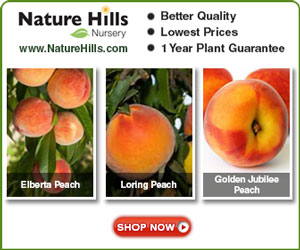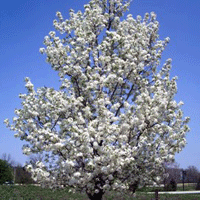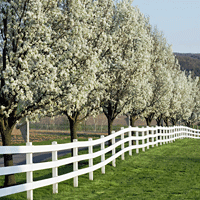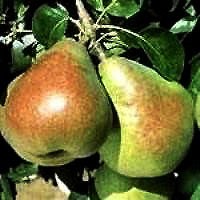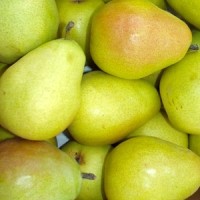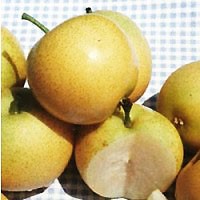Arizona Vegetable & Fruit Gardening
For The Arizona Desert Environment.
Pictures, Photos, Images
Descriptions, Information, & Reviews.
We Are Proud Of Our SafeSurf Rating!
Click On The Item For A More Detailed Look. No Obligation!
 |
| Pear Trees, Pyrus communis. About 24 Feet High. 13 Years Old. Immature Fruit. Photo Taken July 09, 2011 In Yarnell, Arizona. |
|---|
 |
| Pear Trees, Pyrus communis. Starking� Delicious�. Semi Dwarf About 12 Feet High. 4 Year Old. Photo Taken July 09, 2011 In Yarnell, Arizona. |
|---|
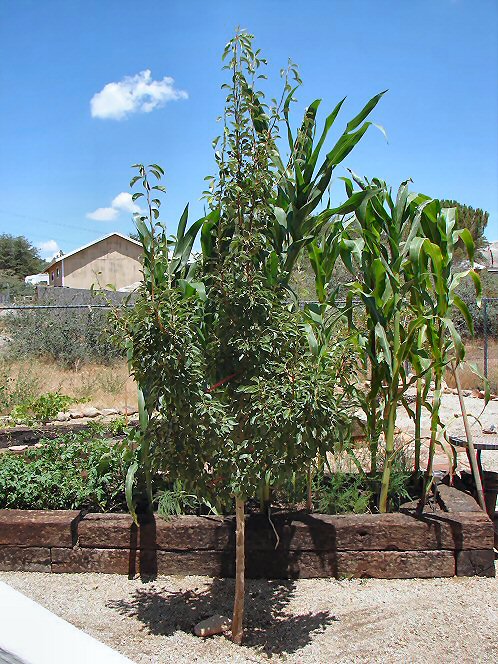 |  |
| Photo Taken July 09, 2011. Moonglow Pear Tree, Pyrus communis 'Moonglow. | Photo Taken July 09, 2011. Starking� Delicious� Pear Tree, Pyrus communis. |
|---|---|
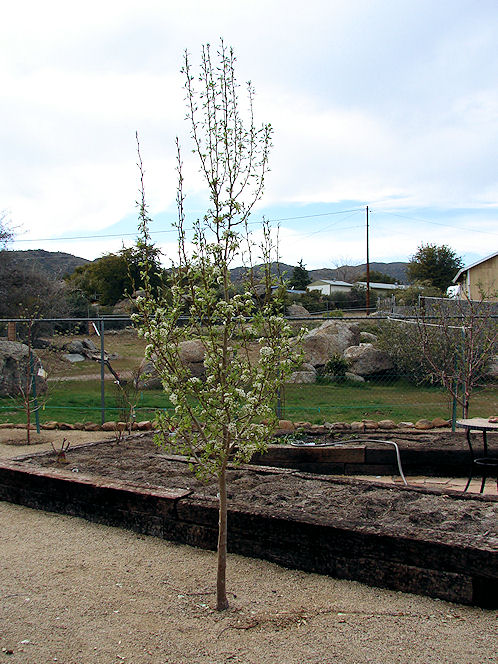 |  |
| Blooming Photo Taken April 08, 2012. Moonglow Pear Tree, Pyrus communis 'Moonglow. | Blooming Photo Taken April 08, 2012. Starking� Delicious� Pear Tree, Pyrus communis. |
 | 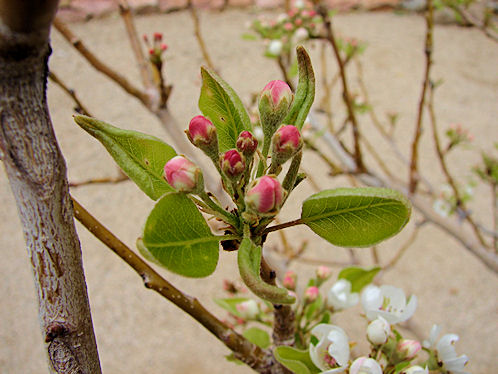 |
| Flowers Photo Taken April 08, 2012. Moonglow Pear Tree, Pyrus communis 'Moonglow. | Flower Buds Photo Taken April 08, 2012. Starking� Delicious� Pear Tree, Pyrus communis. |
 | 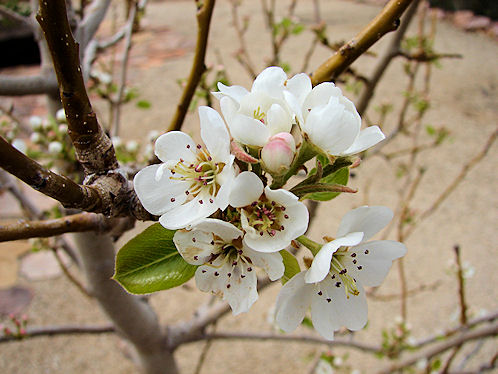 |
| Flowers Photo Taken April 08, 2012. Moonglow Pear Tree, Pyrus communis 'Moonglow. | Flowers Photo Taken April 08, 2012. Starking� Delicious� Pear Tree, Pyrus communis. |
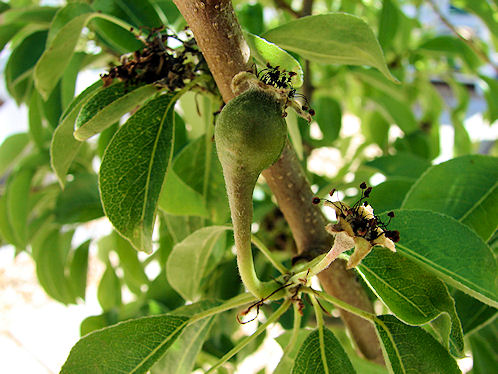 | 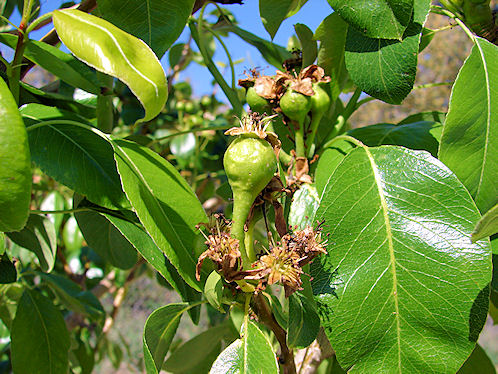 |
| Immature Fruit Bud Photo Taken April 27, 2012. Moonglow Pear Tree, Pyrus communis 'Moonglow. | Immature Fruit Bud Photo Taken April 27, 2012. Starking� Delicious� Pear Tree, Pyrus communis. |
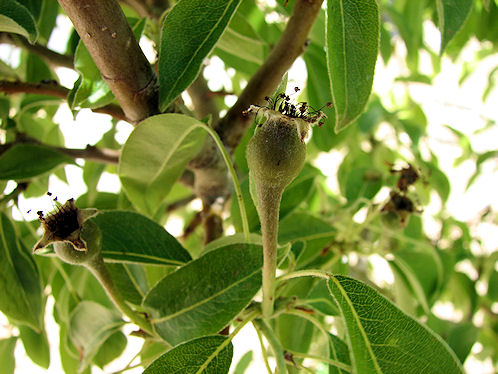 | 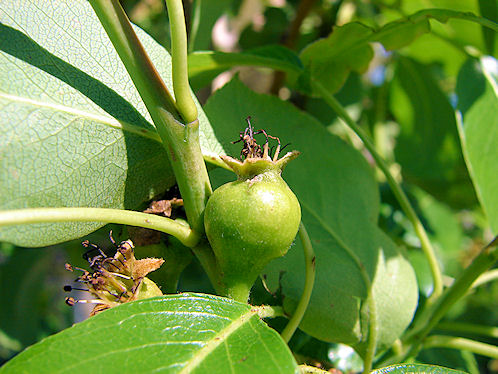 |
| Immature Fruit Bud Photo Taken April 27, 2012. Moonglow Pear Tree, Pyrus communis 'Moonglow. | Immature Fruit Bud Photo Taken April 27, 2012. Starking� Delicious� Pear Tree, Pyrus communis. |
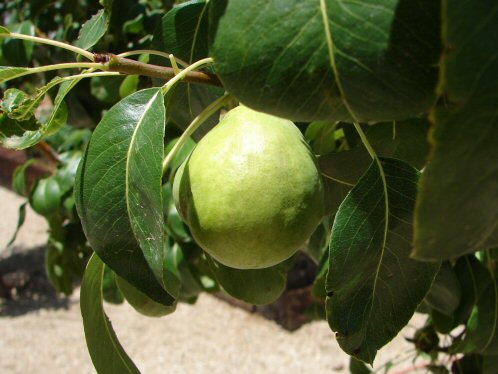 | 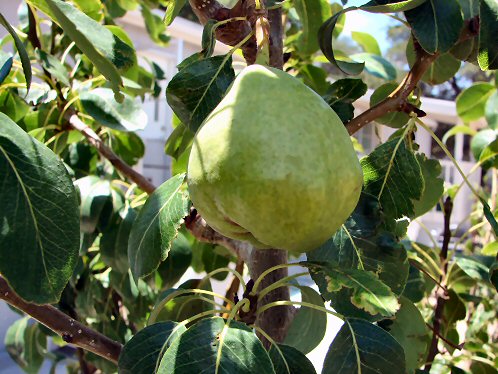 |
| Pear Fruit & Leaves. July 09, 2011. Moonglow Pear Tree, Pyrus communis 'Moonglow. | Pear Fruit & Leaves. July 09, 2011. Starking� Delicious� Pear Tree, Pyrus communis. |
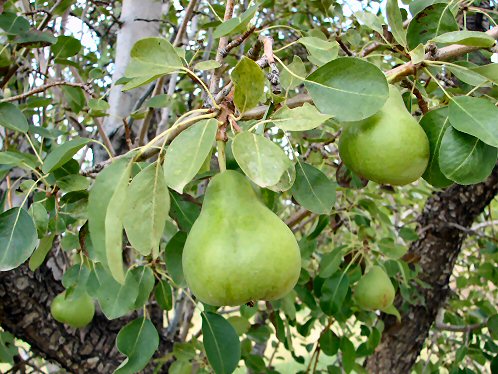 | 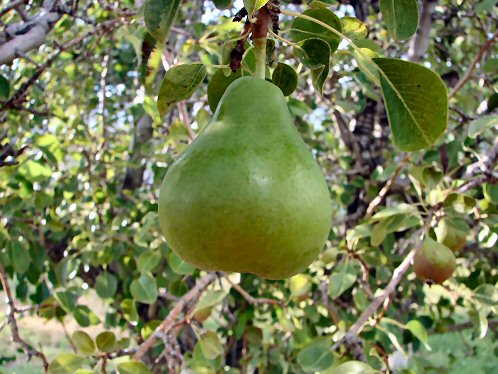 |
| Fruit. Bartlett Pear. July 09, 2011. Pear Trees, Pyrus communis. | Fruit. Bartlett Pear. July 09, 2011. Pear Trees, Pyrus communis. |
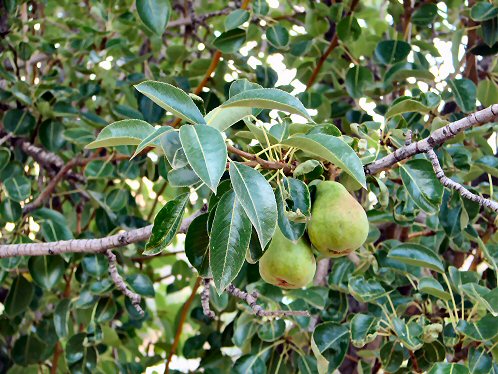 | 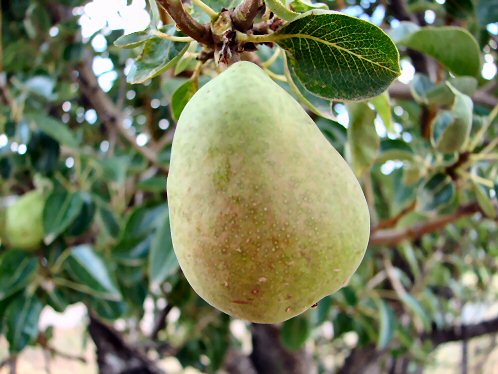 |
| Fruit. Bartlett Pear. July 09, 2011. Pear Trees, Pyrus communis. From Uncared For Tree About 60 Years Old. | Fruit. Bartlett Pear. July 09, 2011. Pear Trees, Pyrus communis. From Uncared For Tree About 60 Years Old. |
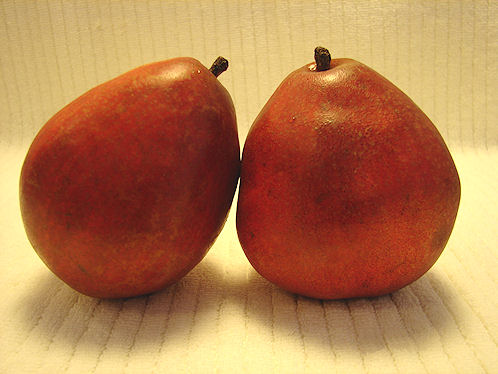 | 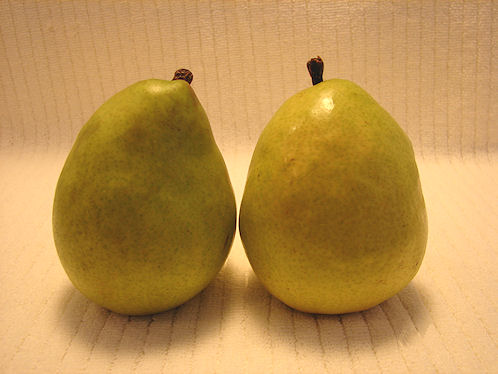 |
| Red D'Anjou or Beurr� d'Anjou Pear Fruit. July 16, 2011. Pear Trees, Pyrus communis. | D'Anjou or Beurr� d'Anjou Pear Fruit. July 16, 2011. Pear Trees, Pyrus communis. |
 |  |
| Beurr� Bosc or Bosc Pear Fruit. July 16, 2011. Pear Trees, Pyrus communis. | 'Packham's Triumph' Pear Fruit. July 16, 2011. Pear Trees, Pyrus communis. |
We Buy Our Hard To Find Fruit Trees For Yarnell Arizona At Nature Hills Nursery.
We Have Several Nice Fruit Trees Growing In Yarnell, Arizona.
They Will Do Well In Other Similar Elevations In Arizona. ie.. Prescott, Cottonwood, Camp Verde, Sedona.
Cameo & Fuji Apples! Yummm! Click The Nature Hills Nursery Link To View.
 /
/

Click On The Item For A More Detailed Look. No Obligation!
Pear Tree
The European Pear, Pyrus communis, is a species of pear native to central and eastern Europe and southwest Asia. The European Pear is one of the most important fruits of temperate regions, being the species from which most orchard pear cultivars grown in Europe, North America and Australia have been developed. Two other species of pear, the Nashi Pear, Pyrus pyrifolia, and the Chinese white pear bai li, Pyrus � bretschneideri, are more widely grown in eastern Asia. At the time of the Romans there were about 50 pear species. By 1860 an American author T.W. Fields notes that there were about 850 races of pears. There are many more varieties now. There are 2 main varieties of pears, namely the European and the Asian. The Asian pear is also known as the apple pear because of the firm crisp fruit. The European pear produces softer, juicer fruit. Asian pear fruits are excellent when picked fresh from the tree. European pears should be picked when the fruit matures, but before they are ripe. Pears can be stored a long time in the mature state. All Asian pear cultivars should be considered self-incompatible, which means you need to plant another Asian pear cultivar as a companion for pollination purposes to produce more fruit. Some European varieties are self pollinating but many will produce more fruit if another compatible pear tree is nearby to help with pollination. Pear trees are fast growing and usually begin to bear fruit in 3 to 5 years after planting. Like apples, pears are usually sold as grafted trees and require similar pruning and training. Pear trees are attractive trees with their glossy dark green foliage and they provide the delicious fruit as well. Pear leaves are simple, finely toothed, and glossy green in color. Pears are rich in dietary fiber, vitamins, and minerals. They are excellent for eating out of hand and in salads. Pears do not contain cholesterol or fat and are low in calories. Pears are an excellent source of potassium and calcium. The pear is the pomaceous fruit or "pome" of the pear tree, species Pyrus communis in the rose family (Rosaceae), sub-family pomoideae. They are fruits that have a "core" of several small seeds, surrounded by a tough membrane. The membrane is encased in an edible layer of flesh. It is one of the most widely cultivated tree fruits, and the most widely known of the many members of the genus Malus that are used by humans. In botany, a "pome" (named after the Latin word for fruit: pomum) is a type of fruit produced by flowering plants in the subfamily Maloideae of the family Rosaceae. A pome is an accessory fruit composed of one or more carpels surrounded by accessory tissue. The accessory tissue is interpreted by some specialists as an extension of the receptacle and is then referred to as "fruit cortex", and by others as a fused hypanthium or "torus." In layman's terms, "it is the most edible part of this fruit". Although the exocarp, mesocarp, and endocarp of some of the other fruit types look very much like the skin, flesh, and core respectively of a pome, they are actually parts of the carpel. The exocarp and mesocarp of a pome may be fleshy and difficult to distinguish from one another and from the hypanthial tissue. The endocarp forms a leathery or stony case around the seed, and corresponds to what is commonly called the core. The shriveled remains of the sepals, style and stamens can sometimes be seen at the end of a pome opposite the stem, and the ovary is often called inferior in these flowers. The pear forms a tree that is small and deciduous, reaching between 9.8 to 39 feet tall, with a a pyramidal or an oval shape. Flowering pear trees, tend to have more of a pyramidal shape. Fruiting types have more of an oval shape. It's shoots remain pubescent for a long time. It's buds are ovoid-conical. The pear tree leaves are alternate, simple, with a serrated margin, 5-10 cm long, ovoid, with pointed peak, and a rounded or slightly heart-shaped base, crenate-serrate, pubescent. It's leafstalk is no more than 1/3 of the blade length. The corolla of the pear is it's inner set of leaflike parts lying just within the calyx and composed of petals The 5 petals of it's flower or it's corolla is considered perfect, it is white or pinkish in color, and 0.98 to 1.4 inches in diameter. It usually has about 30 stamens that produce copious pollen, and they have a half-inferior ovary Generally speaking, the pear tree fruits usually differ in shape, size , color, texture, time of maturity, and storage quality. It's fruits can have a sweet taste. The average weight of it's fruit is about 400 - 600 g. The center of it's fruit contains five carpels arranged star-like, each containing one to two (rarely three) seeds. The fruit is considered a globose pome. Generally speaking pear trees produce flowers in March - June, they bear fruit in August - October, sometimes through December. Generally speaking pear trees grow and bear good fruit on loamy and sandy loam soils, as well as on sandy soils with the addition of organic fertilizations. Normally their growth and development on saline, swampy and peaty soils is not good. Their life expectancy averages about 15 to 20 years, with rare exceptions lasting to 30 years. years. Pear trees are usually offered by nurseries in 3 distinct sizes. Dwarf varieties get to be 5 to 8 feet tall, semi-dwarf varieties are usually 12 to 16 feet tall, and standard varieties get between 16 and 20 feet tall. The size variations allows for pear trees to be planted in small spaces and easier harvesting. When selecting an pear tree, the climatic zone the tree is going to grow in is an important factor. When selecting a pear tree, after you consider where it will grow best, consider it's taste. Fresh fruit is simply better and tastier than the bin stored commercial pears that are sold in supermarkets. After all, it's taste is the most important thing to you!
Here Are Some Of The More Popular Eating Types Of Pears:
The Bartlett Pear Tree, Pyrus communis 'Bartlett': Root Stock, Semi Dwarf: OHXF 333, Semi-Dwarf: 12 - 18 feet high, is a bright yellow. It is the nations leading pear variety. It produces a pear fruit that is aromatic and is outstanding for fresh eating. Along with its very sweet and juicy flavor for eating, it is widely used for canning and cooking because of its excellent taste. The Bartlett Pear trees are self-pollinating, however a pollinator will help the tree bare better fruit. They do require bees to help pollinate. Bartlett Pears do not ripen properly on the tree, so growers pick the fruit when it is mature but green. They tend to bear fruit for up to 50 to 75 years on a good site. Does Best in Zones: 4 - 9.
Blake's Pride Pear is a new pear variety that offers great taste and fireblight resistance. It harvests about three weeks after Bartlett and it stores very well. The tree for Blake's Pride is moderate in vigor and upright-spreading. Yield is moderate to high, with the first crop three to four years after planting. Suggested pollinators are D'Anjou or Bartlet Pear. Does Best in Zones: 5 - 9. We highly recommend growing the Blake's Pride Pear in Arizona, as it is highly resistant to Fire Blight, which is becoming a real problem to pear trees all across the United States, including Arizona.
It has been a favorite of many backyard gardeners for years. The Bosc Pear does require a pollinator which could be a Bartlett or any other pear variety. Harvest time is September and it requires 800 hours of chill time. Does Best in Zones: 4 - 9.
The giant, juicy, rich-flavored pears are golden with a trace of red. It�s also blight-resistant. It is sometimes referred to as the "connoisseur�s" pear. The Comice Pear is self-fruitful in most climates of the western US or can be planted with a Bartlett pear for better fruit. Does Best in Zones: 4 - 9.
The tree is very hardy, large and highly productive. The D'Anjou does not change color as it ripens. Requires cross pollination with Bartlett or any other pear with the same bloom date. Does Best in Zones: 4 - 9.
And you'll get these large, gorgeous fruits year after year. Pick and eat in early September--they keep well in the refrigerator so you can enjoy them later, too. Our canning customers love this pear! A strong pollinator for most other pears. Best pollinator: Moonglow.
It is a consistent, heavy bearer that ripens late September-October, and it is highly resistant to fire blight. Kieffer Pear is very hardy and tolerates hot climates. It . Kieffer Pear trees are easy to grow, and adapt to most conditions. Does Best in Zones: 4 - 9.
One of the very few varieties, almost entirely immune to blight, tree bears fruit for years. Start harvesting fruit in mid-August. A strong pollinator for other pear varieties. Best pollinator: Starking� Delicious�, or Keiffer. Does Best in Zones: 5 - 9.
The trees grow huge, as do the fruits. The Orient pear ripens in August, having the reputation of being the heaviest bearing pear tree. The Orient pear tree is very large in tree size and usually grows 20 feet tall in standard sizes. Orient pear trees have shiny deep green leaves offering summer shade and are covered with white blossoms in the spring. Well-drained sandy loam soils are preferred, but pears will grow on many soil types if good drainage is provided. Pears will grow more vigorously and produce more fruit in full sun. Does Best in Zones: 4 - 8.
This pear is a great fresh-market pear for commercial growers and homeowners that combines both superior resistance to fire blight with good-quality fruit. The Potomac pear is pollinated by Bartlett or Warren. Does Best in Zones: 5 - 8.
It ripens in mid-August to September in Central California. It has golden brown russeted skin and requires 450 hours of chilling. Shinko is the most fire blight resistant of the Asian pears. It is pollinated by Hosui, Chojuro, Kikusui, Bartlett. Does Best in Zones: 4 - 9.
The tree is vigorous, cold hardy, drought resistant, heat tolerant, and is heavy bearing by the second year. The Shinseiki Pear ripens in late July to early August. It is self-fruitful and needs 350-450 hours of chilling. Does Best in Zones: 5 - 9.
The Warren pear is extremely resistant to fireblight and is cold hardy to -20 degrees Fahrenheit. . Self-fruitful, no pollenizer required. Does Best in Zones: 5 - 8. Fireblight is a major pear tree problem in Arizona & all over the USA. We recommend this tree!
Here are some links to the Nature Hills Nursery; where you can order some of their very high quality Pear Trees. Some are flowering only. Others produce fruit. If you click, there is no obligation to buy! You will leave delange.org. NOTE: These are High Quality Speciality Trees. They are not usually found at the typical Big Box Stores!
Planting Pear Trees In Arizona:
Decide on the site for your tree/s some months in advance of planting. NOTE: Almost of the pear trees sold are grafted. Therefore there will be a bud union on every tree. The bud union is the location where the scion meets the rootstock. The bud union should not be buried in the ground when planting. ALWAYS keep the bud union about 2 inches above the ground when planting. 1. Decide on which tree to plant. Fruit trees that thrive in Arizona include the apple, cherry, apricot, fig, nectarine, peach, pear, Asian pear, persimmon, Asian plum and Japanese plum. Although there are general guidelines that apply to any fruit tree growing in Arizona, you should also learn the specific requirements of the tree you plant. 2. Choose a nursery tree. The University of Arizona College of Agriculture and Life Sciences recommends you buy a year-old tree with a trunk that's � to � inches in diameter. Select a fruit tree without broken branches or other signs of injury. If you can, check the roots while still in the nursery or soon after you take the tree home. Save the receipt in case you have to exchange it. Roots with soft spots, bugs, mildew and other irregularities are diseased and can't support a tree's development. In the arid Arizona climate, roots should also be irrigated frequently. At the nursery, touch the soil to verify it's moist. If the tree is bare-root, check that the root ball is in a moist medium. 3. Find a sunny planting site with well-drained soil. Test drainage by digging a hole as deep and wide as the tree's root ball. Then, put 5 gallons of water in it. One hour later, fill the hole with water again. If the soil has absorbed the 10 gallons of water within 24 hours, your soil drains well. Let most of the moisture evaporate before you plant your fruit tree. 4. Schedule the planting. In Arizona, plant bare-root fruit trees in February or March. Transplant container trees in September or October. Most fruit trees for sale have bare roots. Keep store-bought trees in the shade and their soil moist until you're ready to plant them. 5, Enlarge the planting hole you made in Step 3 to five times the width of the root ball, but keep it at the same depth. On the bottom, pile soil in the center to form a small mound in the hole. 6. Loosen and cut broken or discolored roots. Trim longer roots to the same size as the others. 7. Put the tree in the hole with the center of the root ball on the mound. Spread the roots down and around it. Backfill the hole with the topsoil you dug out. 8. Water the soil thoroughly and add a 4-inch layer of mulch around the base of the tree. Continue to water every two days during the growing season, giving your tree about 5 gallons of water a week. The University of Arizona Extension Service also recommends you paint the tree trunk with white latex paint to protect it from sunburn. 9. Prune your fruit tree right after you plant it. Cut the top 1/3 and train it into the shape best for the type of tree you have. For example, use the central leader method for apples and pears, and open center if you have peaches and nectarines. Your nursery or extension office offers advice on the right training method for your fruit tree. 10. Fertilize the soil when new growth begins after planting and in the beginning of every growing season, February to March in Arizona. The type and amount of fertilizer depends on the tree you have, but all fruit trees need nitrogen. In addition, spray a formula of chelated zinc and iron on the leaves. 11. Control pests and treat disease. In Arizona, the codling moth and peach tree borers are among about a dozen common insects that attack fruit trees. Diseases include fireblight, brown and crown rot, and powdery mildew. If something is affecting your tree's appearance and development, get help from your local extension office in identifying the problem and treating it. 12. Thin the fruit to keep branches from breaking under heavy weight and to improve fruit quality. Depending on the tree, you'll either prune the flowers as they bloom or the fruit as they mature, spacing them about 6 inches apart.
Pruning Pear Trees:
Proper training and pruning of fruit trees is essential to the development of a strong tree framework that will support fruit production. Properly shaped trees will yield high-quality fruit much sooner and will live significantly longer. Regular pruning and training will also maximize light penetration to the developing flower buds and fruit. Additionally, a well-shaped tree canopy permits adequate air movement through the tree, which promotes rapid drying to minimize pest problems.
Central Leader Trees:
Newly Planted Trees:
After early winter planting, wait until just before the buds start to grow in the spring to "head", or cut, the unbranched central leader to 36 inches above the soil surface to encourage new lateral branching. When new growth is 3 to 4 inches long, identify the most upright shoot that will continue to be the central leader. Leave it and remove all new shoots growing 3 to 4 inches immediately below this new terminal to prevent competition. This will also encourage lateral growth in the area 6 to 14 inches below the cut tip of the young tree. Branches that form 6 to 14 inches below the cut tip of the tree are less vigorous, less upright, and easier to train as productive scaffold limbs. When the lateral branches, or scaffold branches, are 3 to 6 inches long, they should be spread to a wider crotch angle that will provide a stronger framework for fruit production. Toothpicks or clothespins can be used to prop the young branches out to a 50 to 60 degree angle. This angle will slow vegetative growth, promote lateral branches, and allow the tree to initiate flowers and produce fruit sooner.
Scaffold Training:
Dormant Pruning vs. Summer Pruning:
Pruning the tree during the winter, while it is dormant, will invigorate the tree and cause it to grow and branch more the following season. To promote scaffold branch development, cut the central leader 20 to 28 inches above the highest usable scaffold whorl during the dormant season. It is best to do dormant pruning in late winter or early spring, after the risk of severe freeze is over. Be sure to remove any dead or diseased wood and dried apples at this time as well. After the tree resumes growth in the spring, continue to train the scaffold branches of the tree as you did the previous growing season. Select a new upright shoot to continue the central leader, and remove all new shoots 4 inches below it. Also select the branches to form another whorl of 4 to 5 scaffold branches. Prop all lateral branches out to a 50 to 60 degree angle. Summer pruning will devigorate the tree and cause it to grow less in that growing season. Remove all undesirable branches directly across from one another on the central leader when they are 3 to 4 inches long. Also, select lateral branches that are spaced uniformly around the leader to prevent crowding as the limbs grow in diameter. Once the tree has filled its allotted space, lateral branches will need to be cut back to their desired length during the summer to devigorate the tree and prevent further growth, not during the dormant season. Ask your County Extension Center for information on the best way to prune your apple tree.
Fruit Thinning:
At first thought, it seems strange to thin out what appear to be perfectly good fruit. But, keep on reading. Pear trees can set a heavier crop of fruit than the limbs can withstand. To ensure good fruit size, return bloom for the following year, and to prevent tree breakage, it is necessary to thin the fruit. Pears should be thinned when they are about the size of a dime in diameter. It is recommended to thin fruit, after the natural June fruit drop; which happens during May in most of Arizona. We have done it either before or after the fruit drop, with success, either way. When "thinning," cut & throw away, the poor quality looking fruit buds. Save the best ones. Cut off enough fruit so that the remaining pears are spaced 4 to 6 inches apart, and leave only one fruit per cluster. It may seem like very few fruit remain, but you will harvest higher-quality fruit, potentially reduce insect and disease problems, and increase the chances for a full crop the next season. Some commercial growers even say they see an increased amount of fruit by weight, in the long haul! They all claim to have better quality fruit to sell. We would have to agree that the fruit quality is better and we seem to get a good amount of fruit, by weight. We have shown an example, as to how to thin pears in our pictures above, with both a before & after photo.
NOTE: WE LEARNED THIS THE HARD WAY! (with apples, not pears)
We now thin all of our fruit trees!
Harvesting Pears:
Courtesy of Oregon State University Extension Service: Unlike apples, most pear varieties do not ripen nicely while still on the tree. Pears that are allowed to become too mature or to ripen on the tree develop a coarse, mealy texture and often have core breakdown. Whether you grow pears at home, or buy them in the store, it is sometimes challenging to know when to pick them, then how long to ripen them to perfection. And how do you tell when a pear is ready to eat? David Sugar, who has spent most of his career studying fruit physiology at Oregon State University's Southern Oregon Research and Extension Center in Central Point, says, "pears are tricky, but not really difficult, to ripen just right. Pears picked when slightly immature will ripen with better quality than pears that are over mature when picked. To tell if a pear is mature, a general rule of thumb is that, while still on the tree, most mature, ready to ripen pears will usually detach when 'tilted' to a horizontal position from their usual vertical hanging position. Bosc pears always are difficult to separate from the spur." "Unlike apples, which are ready to eat from the day they are picked, pears must go through a series of changes before they can deliver their full splendor," explained Sugar. "Pears do not ripen on the tree to our liking. If allowed to tree-ripen, pears typically ripen from the inside out, so that the center is mushy by the time the outside flesh is ready." "Commercial pears are harvested when they are 'mature,' he continued. "In pear language, that means they are picked when they have reached the point where they will ripen to good quality, sometimes with a little help, but definitely OFF the tree. "So the frequently heard notion that pears are picked when they are still hard and green as a convenience for enduring the long truck ride to market misses the point," Sugar quipped. Once commercial pears are picked, growers cool them down to about 30 degrees F. They don't freeze at this temperature, because the fruit sugar acts like an antifreeze. "The colder the pears are, the longer they'll stay in good condition," said Sugar. "In fact, they actually need to be cooled in order to ripen properly." "Bartlett pears need to be cooled only for a day or two, and winter pears such as Anjou, Bosc and Comice require 2 to 6 weeks for optimal effect," he said. "Without this chilling process, a mature picked pear will just sit and sit and eventually decompose without ever ripening," explained Sugar. The pears sold in the grocery store or delivered by companies such as Harry and David are mature and have already received their postharvest chilling. They are ready to ripen, according to Sugar. "Pear ripening must be closely watched," he warned. "There is a relatively narrow window between 'too hard' and 'too soft' where the perfect pear texture lies." David Sugar recommends ripening pears at 65 to 75 degrees F for the following times: Bartlett, 4 to 5 days, Bosc and Comice, 5 to 7 days; and Anjou, 7 to 10 days. The longer the time the pears have spent in cold storage, the shorter the time to ripen them, he said. "As ripening begins, pears produce ethylene gas, a ripening hormone, inside the fruit," explained Sugar. "This speeds the ripening along. The ripening time gets shorter as the time since harvest passes." Pear lovers can "kick start" the pear ripening process by putting freshly bought or newly harvested pears in a paper bag with a ripe banana or an apple, both of which give off copious quantities of ethylene gas. The bag keeps the gas near the pears, which soak it up and quickly begin producing their own. How do you tell when a pear is ripened to perfection? "Hold the pear gently but firmly in the palm of your hand, as a baseball pitcher might hold the ball while studying signs from the catcher," recommended Sugar. "Apply the thumb of that same hand to the pear flesh just below the point where the stem joins the fruit. When the flesh beneath your thumb yields evenly to gentle pressure, it is time to eat your pear. If you have to push more than slightly, it is not ready yet." And what is the best way to eat a perfectly ripe pear? "After years of study, scientists have found that a really juicy pear is best eaten while naked, in the bathtub, so that you needn't be concerned about the abundant juice streaming down your chin," David Sugar then laughed.
How To Actually Harvest Your Pears:
If pears are allowed to ripen on the tree, their flesh can become gritty and hard. Pear harvesting should be done between August and September, but if you have a sharp eye, you can watch for the signs of when your pears are ready to be harvested. The harvesting and storage process for pears (unlike many other fruit) requires little more effort than simply some time, and crates to put the pears in. But, there is some good news! While there are many varieties of pears, the harvesting process is the same for all of them.
Step 1.
Step 2.
Step 3.
Step 4.
Step 5.
Step 6.
An excellent pdf document that explains the Picking and Storing Apples and Pears, is from the Oregon State University Extension Service. � 1997 Oregon State University. It may be photocopied or reprinted in its entirety for noncommercial purposes.Click Here For: "Picking and Storing Apples and Pears.".
Pear Tree Pests:
Various pest organisms, primarily arthropods (insects and mites), diseases, weeds, and mammals are associated with apple production and they cause significant economic losses to commercial fruit growers. The focus of this guide is on arthropod pests and diseases of apple. Insect pests found in apple orchards can be classified into two groups depending upon which plant part is attacked. Direct pests are those insects that feed on apple fruits, while indirect pests are those that attack leaves, trunk, and other parts of the tree. Examples of direct pests of apple in Minnesota are apple maggot, plum curculio, codling moth, and other internal fruit feeders. Pests like spotted tentiform leafminer, aphids, and mites may affect yield if present in large numbers, but they are indirect pests since they do not directly injure fruits. Insect pests can also be classified in terms of the seriousness of their infestation and effect on orchard economics. Major pests are those that have the potential to cause major economic losses to the grower. Usually, most direct pests that feed on fruit are also considered major pests. Apple maggot, plum curculio, and codling moth constitute the "big three" pests of apple in Minnesota and the upper Midwest. Indirect pests usually do not feed on the fruit, and although their activities may limit fruit yield they are considered minor pests. A third category of pest insects is the quarantine pests. Quarantine pests are insects not known to be established in a given area. The flat scarlet mite and apple ermine moth are current examples of quarantine pests in Minnesota. Not all insects and mites in apple orchards are harmful. Many arthropods, such as lady beetles, predaceous bugs, spiders, and predator mites benefit the grower by feeding on pest insects and mites. Bees also fall into this category of beneficial arthropods by aiding apple pollination. Many diseases of apple are not restricted to one part of the tree. For example, apple scab attacks the fruit, leaves, and flowers. Powdery mildew can also infect many parts of the tree. Fire blight is a tree disease infecting leaves, shoots, limbs, and trunk, but it can infect fruit and root stock. The fungal disease complex known as sooty blotch and flyspeck is, however, restricted to the fruit.
Beneficial Insects:
Not all insects found in an apple orchard are pests. Many organisms benefit the grower by eating or parasitizing pests in the orchard. These organisms are known as beneficials, natural enemies, or biological control agents. They may be native or introduced from other areas. Beneficial natural enemies (insects and mites) that may occur in an apple orchard could be classified as predators or parasitoids. Predators are those that attack, kill, and feed directly on a pest (prey). Examples of common orchard predators are ladybeetles, flies, lacewings, wasps, bugs, ants, spiders, and predator mites. Parasitoids are insects that lay eggs on or in a pest (host). The developing larva lives and feeds on the host, parasitizing and eventually killing it. Examples include parasitic wasps such as the egg parasite, Trichogramma sp. Bees are a different class of beneficial insects in the orchard in that they benefit the grower by aiding pollination. It is important that growers are able to recognize, identify, and conserve beneficials in their orchard. Conservation of beneficial organisms is a basic tenet of an ecologically sound pest management strategy. Conservation or enhancement of beneficials can be achieved through judicious use of pesticides such as spraying only when and where needed, accurate timing of sprays, and selecting pesticides that are least toxic to beneficials. For Example: Many growers now place colonies of the Blue Orchard Mason bees in their orchards to pollinate their crops for maximum production.
Quick Notes:
Type: Considered a fruit, technically it is a Globose Pome.
Height: About 20 - 25 feet.
Spread: About 15 - 20 feet wide.
Flowers: White with a pink tinge that gradually fades, five petaled, and 2.5 to 3.5 centimetres (0.98 to 1.4 in) in diameter.
Blooming Time: Spring.
Fruit: 5 to 9 centimetres (2.0 to 3.5 in) in diameter. The center of the fruit contains five carpels arranged in a five-point star, each carpel containing one to three seeds, called pips.
Leaves: Blue-green to green in color, aalternately arranged simple ovals 5 to 12 cm long and 3�6 centimetres (1.2�2.4 in) broad on a 2 to 5 centimetres (0.79 to 2.0 in) petiole with an acute tip, serrated margin and a slightly downy underside.
Elevation: 0 - 9,500 feet.
Hardiness:
Soil pH requirements:
Light: Full Sun.
Habitat: Mulched areas. Well-drained soil with a 5.8 to 6.5 pH. According to Clemson University.
Native: Western Asia, where its wild ancestor, the Alma, is still found today.
Miscellaneous: Photos Taken July 02, 2011 & April 8, 2012 In Yarnell, Arizona. Hardy Temp: 15 - 34�F. Attractive to bees, butterflies, and/or birds. Water regularly; do not overwater.
|
Click On The Item For A More Detailed Look. No Obligation!

